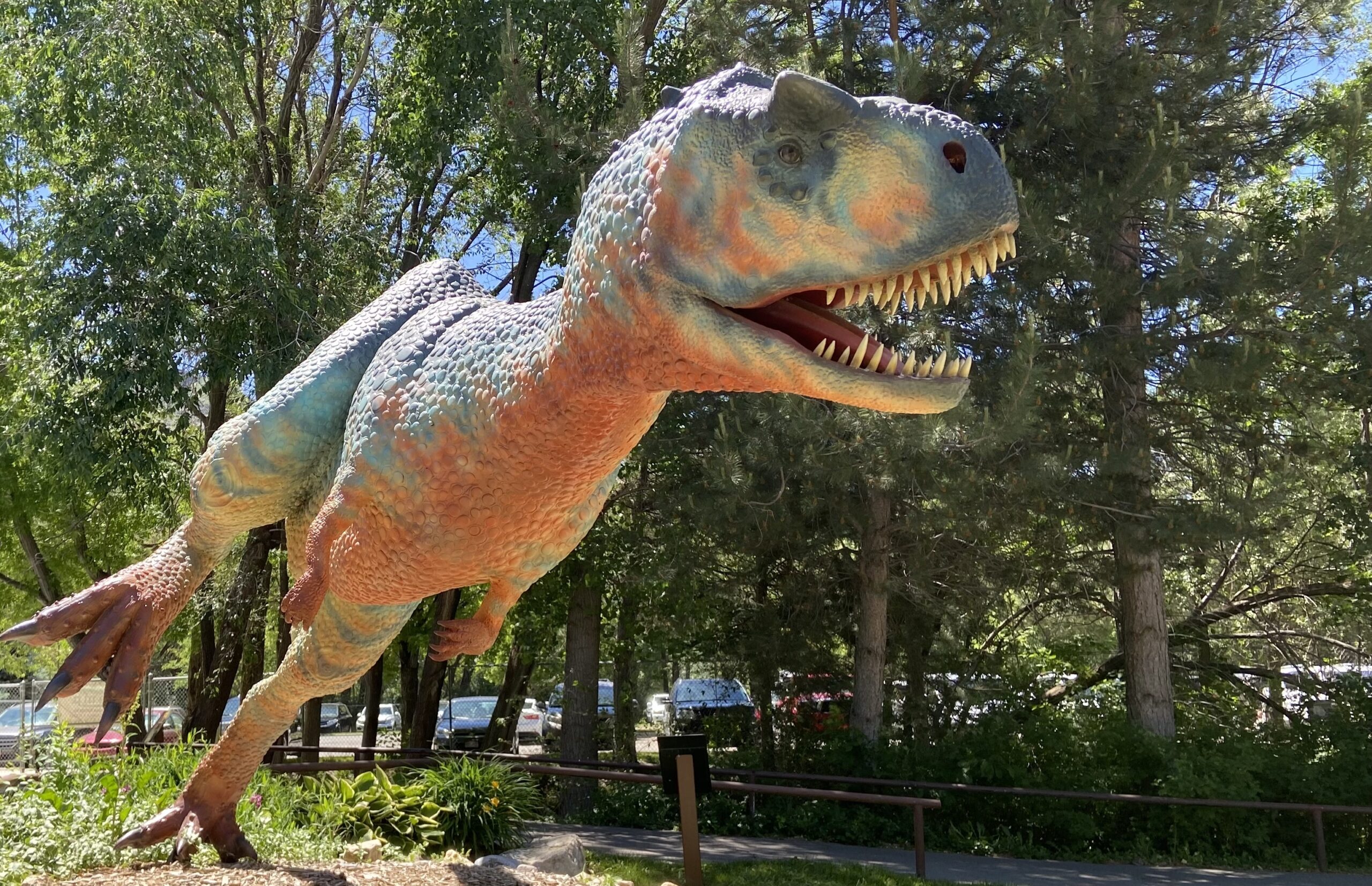
Species: sastrei
Range: Late Cretaceous (Santonian-Maastrichtian, 85-70 MYA) from Argentina
Size estimate: 25-30 ft length, 1-1.5 tons
Discovery: Jose Bonaparte, 1985
Classification: dinosauria, saurschia, theropoda, ceratosauria, abelisauridae
Since no one has ever seen a living dinosaur, and the missing pieces of the fossil record withhold important clues to their appearance, no artistic representation of a dinosaur ever gets it 100% right. On top of that, new discoveries can change our ideas of extinct creatures drastically. So, how close does this sculpture come to what we know of the original animal?
© 2023 Dinosaur Park • All Rights Reserved.